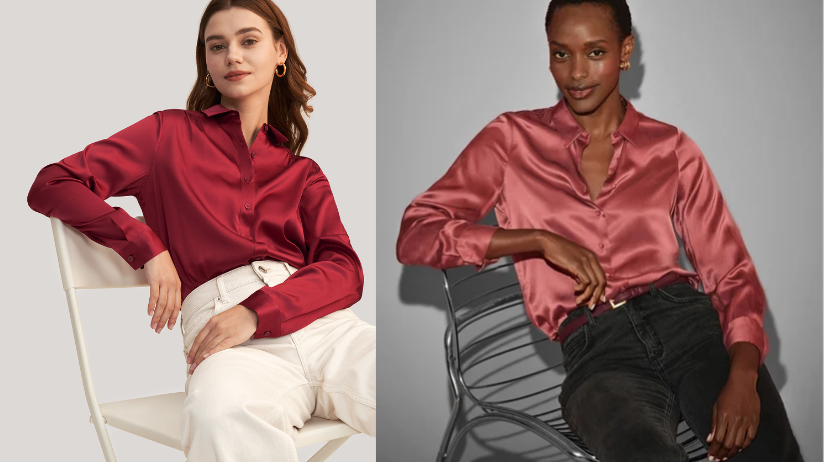How to Calculate the Right Watch Size for Your Wrist With Real Formulas
By Admin
Published on 2025-10-30 17:39:00

This blog breaks down how to accurately calculate your perfect watch size using simple wrist measurements and formulas.
Finding the right watch can be trickier than it looks. Maybe you’ve tried on a gorgeous piece that looked amazing in the showcase but somehow felt off once on your wrist. Too big, too small, too chunky, it happens all the time. The truth is, watch sizes aren’t one-size-fits-all, and the perfect fit comes down to knowing your wrist size and how to match it with watch case dimensions, lug-to-lug length, and strap width.
This guide breaks it down with simple formulas and practical tips so you can confidently pick a watch that complements your wrist, whether you’re shopping online or trying one on in-store.
Why Watch Size Really Matters
A watch isn’t just about telling time, it’s a piece of jewelry, a statement, and for some, even a legacy item. But if the proportions are off, even the most luxurious timepiece can look awkward.
- Too big? It can overwhelm your wrist, sliding around uncomfortably.
- Too small? It might look out of place, almost like borrowing a watch from someone else.
- Too thick or long? It can snag on cuffs or feel heavy after a few hours.
The goal is balance. When your watch case diameter, strap width, and lug-to-lug length align with your wrist size, it creates harmony that feels natural and looks sleek.
Step 1: Measure Your Wrist Size Correctly
Before you even think about watch band sizes or case diameter, you need your wrist measurement.
Here’s how to measure wrist size for a watch:
- Use a flexible measuring tape (or even a strip of paper you can mark and then measure with a ruler).
- Wrap it around your wrist where you normally wear your watch.
- Note the measurement in millimeters (mm), since most watch specs are listed this way.
Wrist size ranges:
- Small wrist: 130–160 mm (5–6.3 inches)
- Medium wrist: 161–185 mm (6.4–7.3 inches)
- Large wrist: 186–210 mm (7.4–8.3 inches)
- Extra-large wrist: 211+ mm (8.4 inches and up)
Knowing this number is the foundation for choosing your ideal watch size.
Step 2: Understand Watch Case Diameter
The case diameter is the most noticeable part of a watch’s size. It’s the width of the watch face, not including the crown.
Formula for case diameter fit:
Your ideal watch case diameter = Wrist size (in mm) ÷ 4.5 to 5.5
Example: If your wrist is 170 mm:
170 ÷ 4.5 = 37.7 mm
170 ÷ 5.5 = 30.9 mm
So, the sweet spot for this wrist size would be 31–38 mm.
General guidelines:
- Small wrists (130–160 mm): 34–38 mm watch sizes
- Medium wrists (161–185 mm): 38–42 mm
- Large wrists (186–210 mm): 42–46 mm
- Extra-large wrists (211+ mm): 46+ mm
Tip: If you’re shopping online, zoom in on the product images and use the case diameter number as your key reference, it’s usually listed in the specs.
Step 3: Don’t Ignore Lug-to-Lug Distance
This is where many people go wrong. The lug-to-lug length (the distance from the top of one lug to the bottom of the opposite lug) can make a watch feel bigger or smaller than its case diameter suggests.
Rule of thumb:
The lug-to-lug distance should never exceed your wrist width.
Example: If your wrist is 55 mm wide (measured straight across), the lug-to-lug should be ≤ 55 mm for a proper fit. Anything longer will overhang, making the watch look too large.
Step 4: Strap and Watch Band Sizes
Your strap choice can completely change how a watch feels.
How to measure watch band size:
Strap width is usually half the case diameter. So if your watch has a 40 mm case, a 20 mm strap is standard.
But it’s not always one-size. Brands sometimes play with proportions. Here’s a quick watch band size guide:
- Case 34–36 mm= Strap 16–18 mm
- Case 37–40 mm= Strap 18–20 mm
- Case 41–44 mm= Strap 20–22 mm
- Case 45–48 mm= Strap 22–24 mm
Pro tip: Leather straps can look slimmer, while metal bracelets feel chunkier. If you’re between sizes, choose based on your style preference.
Step 5: Watch Thickness and Proportions
Case thickness is often overlooked but makes a huge difference in comfort.
General ratio:
Case thickness should be about 10% of the case diameter.
So, if you’re wearing a 40 mm watch, around 10 mm thick is ideal. Go thicker only if you like a bold, sporty feel.
Matching Watch Sizes to Style
Now that you know the math, here’s how it applies in real life.
Office Wear (Slim Fit):
Medium wrist (170 mm), 38–40 mm dress watch, 18–20 mm leather strap, <10 mm thick.
Casual Everyday:
Large wrist (190 mm), 42 mm field watch, 22 mm nylon strap, 11 mm thick.
Sports/Diving:
Medium wrist (175 mm), 40–42 mm diver, 20–22 mm rubber strap, 12–13 mm thick.
By applying formulas, you can fine-tune your pick without second-guessing.
Common Watch Sizing Mistakes (And Fixes)
- Buying based on trends only: Oversized watches may be popular, but if the lug-to-lug hangs off your wrist, it’ll always feel wrong.
- Ignoring strap fit: A case may be perfect, but a strap that’s too wide or too thin throws off balance.
- Not testing in context: Always try a watch with the type of outfit you’ll wear it with, what looks fine in a store mirror may not work under your shirt cuff.
Fixes are simple: stick to formulas, use a watch band size guide, and check proportion, not just diameter.
How to Measure Watch Size Without Trying It On
Shopping online? Here’s a quick hack:
- Measure your wrist width (mm).
- Compare it to the lug-to-lug spec listed.
- Print a watch size chart or cut out a paper circle to match the case diameter. Place it on your wrist to see how it looks.
It’s not perfect, but it saves a ton of guesswork.
Choosing the right watch size consists of finding a balance between wrist size, case diameter, lug-to-lug, and strap width. Once you understand these measurements and formulas, you’ll never second-guess a watch purchase again. The next time you shop, whether online or in-store, you’ll know exactly how to measure watch size, how to measure watch band size, and how to avoid the trap of bulky or undersized pieces. Your wrist and your style will thank you.
For more on watches, follow VibenVenture.
You dress for comfort, or confidence, or maybe chaos. But your clothes are already telling your story before you even say a word.
Before a word leaves your mouth, your outfit has already spoken. That oversized sweater you keep reaching for? It might be whispering comfort. That tailored blazer you break out on big days? It’s announcing confidence, capability, and control. Our outfit choices often say what we haven’t found the words for yet. It’s the emotional truths and triggers behind clothing that turn a closet into something more than storage, it's a gallery of your inner world.
Style doesn't just consist of trends alone. It’s an constantly changing language we speak to the world around us. And often, without knowing it, we’re broadcasting our moods, boundaries, histories, and even our aspirations. The way we dress is an invitation to connect or a subtle signal to keep a respectful distance.
If you look closely, you’ll notice patterns in your clothing habits. There are days when you throw on something bold to feel seen. There are also days when you fold into your softest hoodie because you need to feel safe. The connection between clothes and emotions is incredibly real. And the more tuned in you are, the more you can learn about yourself without saying a word.
Emotional Dressing Is Real
Let’s drop the idea that getting dressed is just a routine task. Because the truth is, emotional dressing happens daily. That rush of calm when you put on your go-to jeans? That little lift you feel when your favorite clothes still fit after a rough week? And no it’s not just the texture or the fabric, but actually you feel seen and oddly soothed.
Science has actually backed this up. Studies show that clothing colors and emotions are deeply intertwined. People often gravitate toward darker tones like navy, charcoal, or deep green when feeling low, and opt for bright shades like red or yellow during periods of energy and confidence. Color has a way of expressing what we’re not ready to verbalize, making it a powerful tool in our emotional toolkit.
And then there's the act of getting dressed itself. On days when the world feels heavy, pulling yourself together with intention, even if it’s just a soft tee and your best-fitting trousers can feel like reclaiming a bit of control. Our outfit choices may be rooted in aesthetic, but they often reveal much more about our internal weather.
Your "Go-To" Outfit Isn’t Random
Everyone has one. The outfit that feels like a reset button. Maybe it’s a flowy dress that catches the light just right, or maybe it’s a black-on-black combo that makes you feel quietly powerful. But here’s the thing: that favorite outfit didn’t earn its place by accident. It did so because it offers emotional safety. Maybe it reminds you of a time you felt admired. Maybe it simply doesn’t ask too much of you.
These are the garments that act like emotional armor. They allow you to move through your day without questioning if you look okay. They offer familiarity in moments of instability. And the emotional connection we form with them goes far beyond style. They’re rooted in memory, identity, and yes, even vulnerability.
Fashion has its moods, but your emotional clothing truths run deeper. Sometimes, the simplest top carries the heaviest meaning. And that’s what makes your wardrobe personal consist of emotional alignment not just trends.
When Style and Personality Finally Sync
Ever met someone whose outfit just makes sense with who they are? Their clothing seems to mirror their presence. Nothing feels forced, nothing screams for attention and yet, you notice them. That’s style meeting personality at a soul level.
When your style choices stop trying to impress and start reflecting your essence, everything clicks. The textures, the silhouettes, even the little rips or rolled-up sleeves, they all feel intentional.
There’s also freedom in not needing to explain your fashion anymore. The moment you start dressing for yourself, your style becomes easier to trust. You stop second-guessing outfit choices. You stop shopping for approval. Instead, you start owning your narrative without needing to speak a word. That’s what your clothes say about you when they’re finally aligned with who you are.
Rebuilding a Wardrobe That Feels Like You
If you’ve ever looked into a closet full of clothes and thought, "I have nothing to wear," it’s rarely about quantity. More often, it’s about disconnection. Those pieces might fit your body, but not your current self. And that's your signal: it’s time to rebuild.
But rebuilding doesn’t mean starting over. It means listening in. What colors have been resonating with you lately? What shapes make you feel most at home in your skin? These are the subtle emotional clues that guide wardrobe changes that actually stick.
Start by identifying the pieces you keep reaching for. What do they have in common? Is it comfort? Is it confidence? Let those favorite clothes guide the blueprint for what comes next. This kind of intentional shopping leads to a closet filled with things that speak to your now, not your past or your Pinterest board.
Letting go of clothes that feel performative is one of the most freeing things you can do. Maybe they were trendy, maybe they got you compliments, but if they never felt like you, they were just costumes. Dressing with authenticity means choosing what mirrors your insides, even when it doesn’t match the outside noise.
The goal isn’t to follow style rules but to follow emotional alignment. The connection between clothes and emotions becomes clearer when your closet feels more like a reflection than a projection. And when that happens, dressing becomes less about decision fatigue and more about emotional fluency.
Fashion isn’t shallow. It’s layered with meaning. Every outfit tells a story, every clothing choice carries weight. From emotional triggers to quiet truths, our clothes often speak louder than we do. When you tune in to what your favorite clothes are saying, you’re not just decoding a wardrobe, you’re learning to hear yourself more clearly. So next time you reach for that hoodie or blazer or flowy skirt, pause. Ask yourself what story it’s telling today. Because chances are, it’s already speaking volumes.
For more on clothing and fashion, follow VibenVenture.




